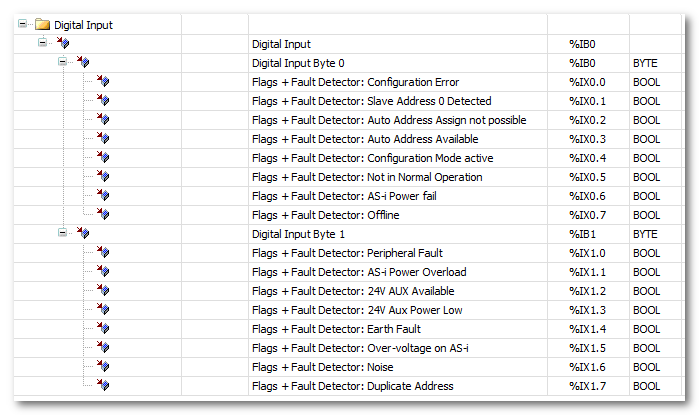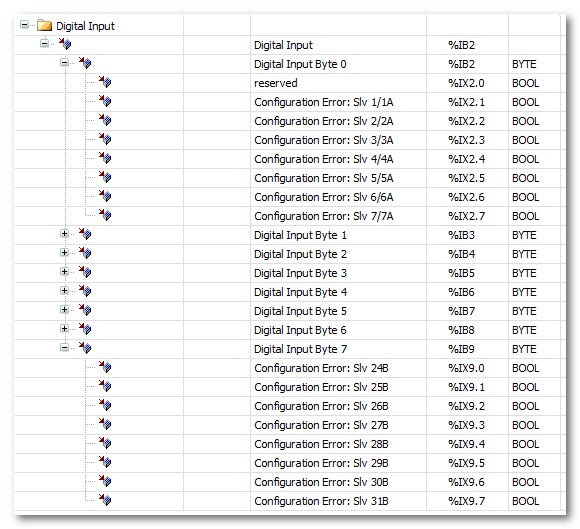The AS-i Gateway provides diagnostic bits which can be read and evaluated in the standard EcoStruxure Machine Expert application.
These diagnostic bits are separately available for gateway circuit 1 and circuit 2 and can be included into the cyclic SERCOS communication channel. This is done by plugging special device objects into a free slot of a AS-i Gateway device in the EcoStruxure Machine Expert device tree.
Available device objects for diagnostics
The following plugable device objects are available:
'C1: Flags and Fault Detector' device objects provides channel-related diagnostic bits.

'C1: Delta List (List of Configuration Errors)' device object provides diagnostic bits for detecting configuration errors of AS-i slaves.

How to include and use the device objects with diagnostic bits in EcoStruxure Machine Expert
The following steps are to be done in the 'Devices' window in EcoStruxure Machine Expert under the AS-i Gateway node.
Right-click a free 'Empty_Module' node and select 'Plug Device...' from the contextual menu.
In the 'Plug Device' dialog, select 'Bihl+Wiedemann GmbH' from the 'Vendor' drop-down list.
Select the desired diagnostic device object to be plugged in: 'C1: Flags and Fault Detector' or 'C1: Delta List (List of Configuration Errors)'.
(Make sure that the correct device version is selected for insertion. Select the 'Display all version' checkbox, if necessary.)
Click the 'Plug Device' button to confirm the selection and insert the device object into the 'Devices' tree. The node is renamed accordingly.
Repeat the steps 1 to 3 to plug in a further diagnostic device object or close the 'Plug Device' dialog.
Double-click the newly inserted device object to open its properties in the parameter editor on the right.
Set the Sercos parameters of the device object.
Map the diagnostic bits provided by the device object in your application.
Click the 'sercos Module I/O Mapping' editor.
Expand the byte structure in the editor grid and locate the diagnostic bit to be mapped.
Double-click into the grid field (in the 'Mapping' column) and enter a variable name or select an already declared variable with the browse button '...'.